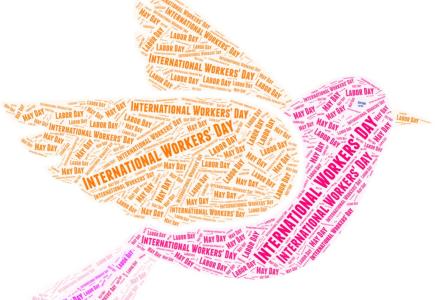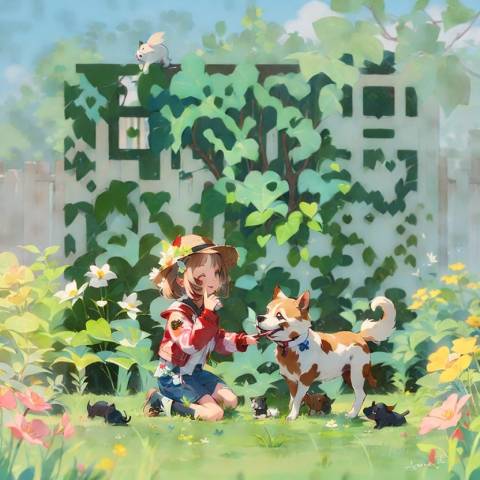Traditions about Mid-Autumn Festival in China
中秋节的传统
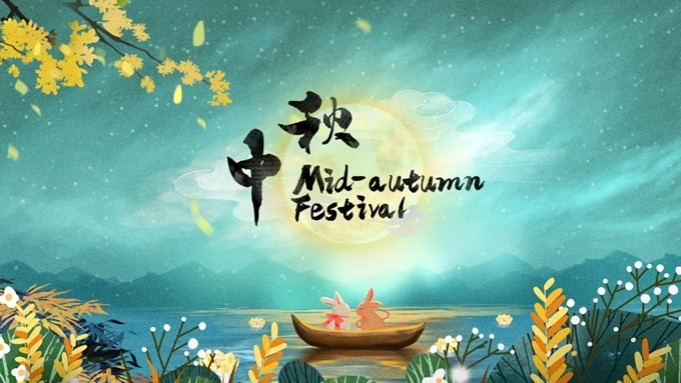
As one of the most important traditional Chinese festivals, the Mid-Autumn Festival falls on the 15th day of the eighth lunar month, September 24 this year.
中秋节是中国最重要的传统节日之一,今年农历8月15日,对应公历9月24日。
It takes its name from the fact that it is always celebrated in the middle of the autumn season. The day is also known as the Moon Festival, as at that time of the year the moon is at its roundest and brightest.
中秋的名字来源于秋季中期时节,每年的这个时候月亮是最圆最亮的。
This day is also considered a harvest festival since fruit, vegetables and grain have been harvested by this time.
这一天也被认为是收获的节日,人们在这个时候收获了水果、蔬菜和谷物。
It is an evening celebration where families gather together to light lanterns, eat mooncakes and appreciate the round moon. The full moon is a symbol for family reunion, which is why that day is also known as the Festival of Reunion.
中秋节一般在晚上举行庆祝活动,家人聚在一起点亮灯笼、吃月饼、欣赏圆圆的月亮。满月是家庭团聚的象征,这就是为什么这一天也被称为团圆的节日。
The Mid-Autumn Festival celebrations date back more than 2,000 years. The word "Mid-Autumn" first appeared in the famous ancient book Zhou Li (The Zhou Rituals, a book telling the rituals in the Zhou Dynasty). However, it was not until the early Tang Dynasty (618-907) that the day was officially celebrated as a traditional festival. It became an established festival during the Song Dynasty (960-1279), and has become as popular as the Spring Festival since the Ming and Qing dynasties
(1368-1911). Celebrations have continued ever since and more customs for marking this occasion have been formed.
中秋节的庆祝活动可以追溯到两千多年前。「中秋」一词最早出现在著名古籍《周礼》(《周礼》,讲述周朝礼仪的书)中。然而,直到初唐(公元618年-907年),这一天才被正式作为一个传统节日来庆祝。它在宋朝(公元960年-1279年)成为一个固定的节日,从明清(公元1368年-1911年)开始就和春节一样流行。从那以后,中秋节庆祝活动一直在继续,并形成了相关习俗。
In feudal times, Chinese emperors prayed to Heaven for a prosperous year. They chose the morning of the 15th day of the second lunar month to worship the sun and the night of the 15th day of the eighth lunar month to hold a ceremony in praise of the moon. In the Xicheng district of Beijing is the Yuetan Park, which originally was the Temple of Moon, and every year the emperor would go there to offer a sacrifice to the moon.
在封建时代,中国皇帝祈求天年兴旺。他们选择了在正月十五的早晨祭拜太阳,在八月十五的晚上祭拜月亮。在北京西城区有一个月坛公园,它原本是月亮庙,古时候皇帝每年都会去那里祭祀月亮。
The Chinese government listed the festival as intangible cultural heritage in 2006. It was made a public holiday in 2008.
2006年,中国政府将中秋节列为非物质文化遗产,在2008年被定为公共假日。
Since then, Mid-Autumn Festival has been the second grandest festival in China after Chinese New Year. It』s a time when families come together to appreciate the full moon and eat mooncakes during the festival. In fact, besides these two traditions, there are many others.
从那时起,中秋节已经成为中国仅次于春节的第二大节日。这是一个家庭团聚在一起欣赏满月和吃月饼的节日。事实上,除了这两种传统,还有许多其他的传统。
The following are the traditions you may know about Mid-Autumn Festival in China.
下面我们一起细数一下你可能不知道的中国中秋节传统。
1. Worshiping the moon
1. 拜月
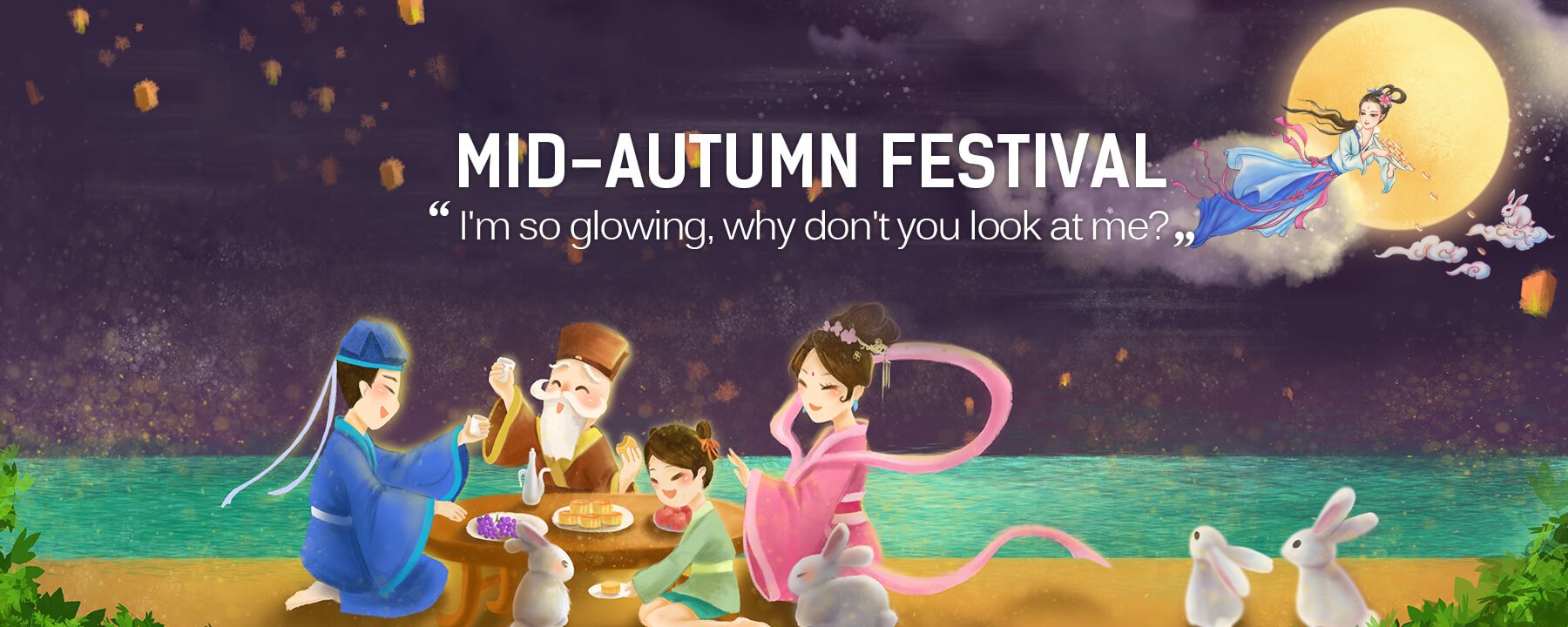
Since ancient times, there has been a tradition of worshiping the moon in
Mid-Autumn Festival in China, which stems from the deification of the moon by the ancients.
自古以来,中国中秋节就有拜月的传统,这源于古人对月亮的神化。
On that day, people put the "god of the moon" sign, peaches, watermelons, moon cakes and other offerings on a table at home or outdoors, and then knelt down and kowtowed one by one, praying for blessings from the "god of the moon".
在这一天,人们会在家里或户外的桌子上放上「月神」的牌子、桃子、西瓜、月饼等祭品,然后一个一个地跪下叩头,祈求「月神」的保佑。
Nowadays, this tradition is disappearing. It』s rare to see families worshiping the moon in big cities. In some old towns or tourist cities, people will hold a ceremony to worship the moon in a square, park, or street, but this is more like a performance.
如今,这一传统正在消失。在大城市里很少看到家庭崇拜月亮。在一些古镇或旅游城市,人们会在广场、公园或街道上举行拜月仪式,但这更像是一种表演。
2. Watching the tide
2. 观潮
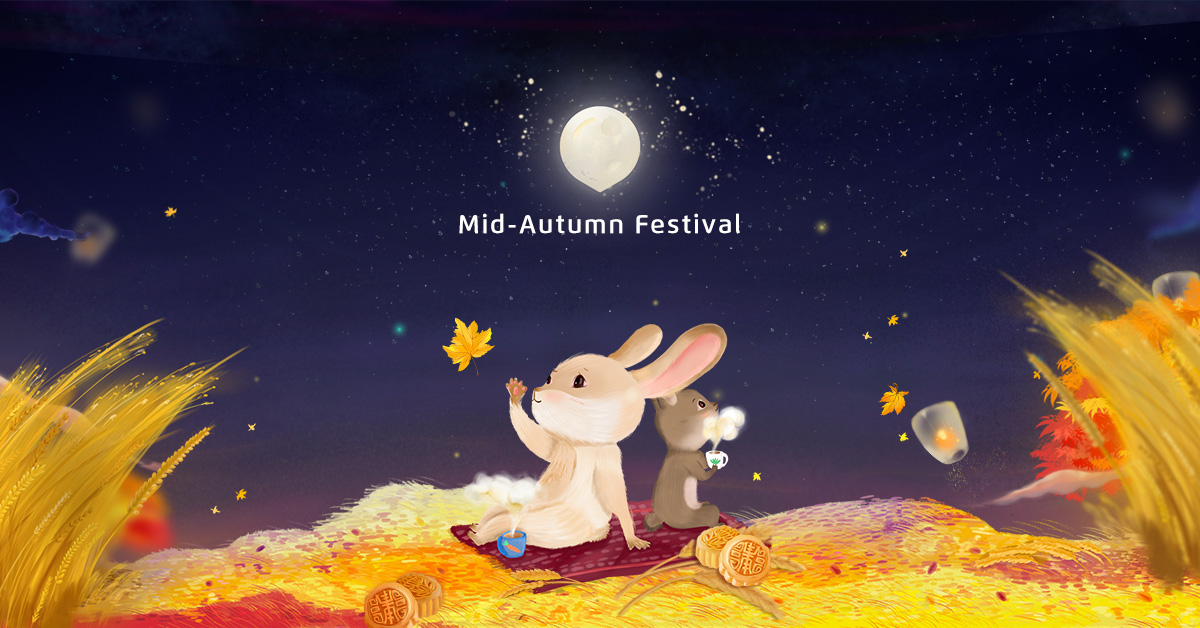
In ancient times, watching the tide on the Qiantang River in East China』s Zhejiang province was another grand event of Mid-Autumn Festival. The tide is very torrent island magnificent and attracts many onlookers.
在古代,在中国东部浙江省钱塘江上观潮是中秋节的另一项盛事。潮水涨得很大,很壮观,吸引了很多人围观。
It had been recorded in detail since the Han Dynasty (206 BC-220). Many famous ancient poets, like Sushi in the Song Dynasty (960-1279), wrote about the grand
occasion in their poems.
从汉朝(公元前206年-220年)开始,它就有详细的记载。许多著名的古代诗人,如宋代(960-1279)的苏轼,都在他们的诗歌中写下了这一盛况。
Today, watching the tide on the Qiantang River is still a characteristic event for the festival.
今天,观看钱塘江上的潮水仍然是节日的一项特色活动。
3. Making colorful lanterns
3. 制作彩灯
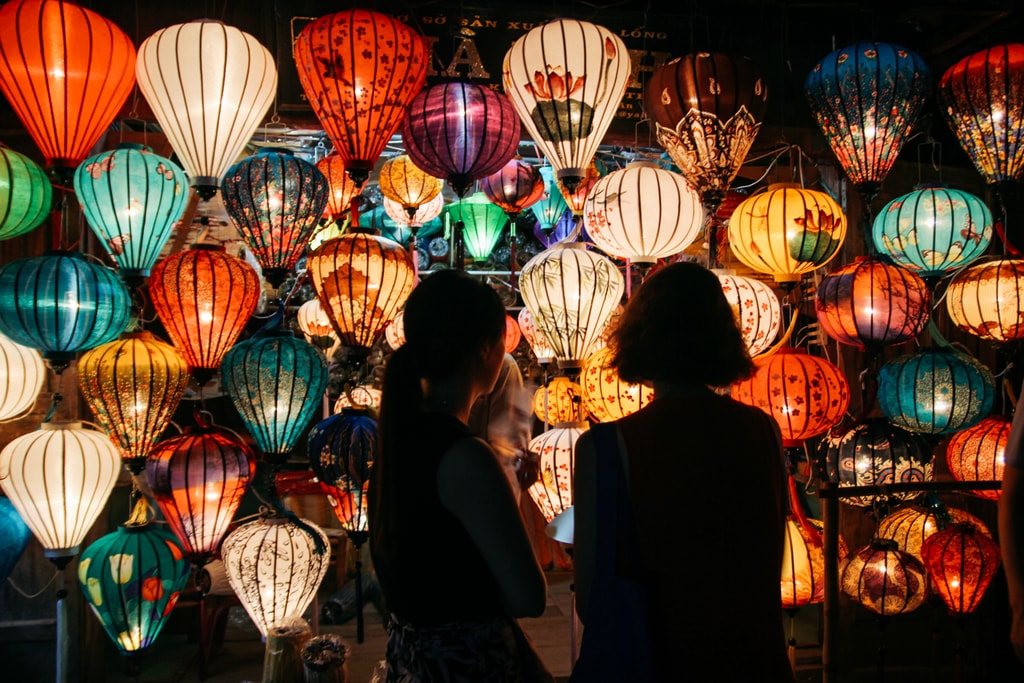
On the night of the Mid-Autumn Festival, the sky is clear as water, and the moon is full and bright like a mirror. People usually make colorful lanterns to decorate the beautiful night.
中秋节的夜晚,天空清澈如水,月亮如镜般明媚。人们通常制作彩色的灯笼来装饰美丽的夜晚。
They make the lanterns in different shapes to be hung on trees or houses, or floated on rivers. Park personnel will hang up colorful lanterns, which provide a beautiful scene at night.
他们做不同形状的灯笼挂在树上或房子上,或漂浮在河流上。公园的工作人员会挂起五颜六色的灯笼,在晚上提供美丽的景色。
They also make Kongming lanterns, which can fly because the burning candles heat the air in the lantern. Children write good wishes on the lanterns and let them fly up into the sky.
他们还制作孔明灯,因为燃烧的蜡烛会把灯笼里的空气加热,孔明灯就能飞起来。孩子们在灯笼上写下美好的祝愿,让他们飞向天空。
4. Burning pagodas
4. 烧宝塔
In some places, burning pagodas during the Mid-Autumn Festival is another tradition.
在一些地方,在中秋节烧宝塔是另一个传统。
When night falls, people gather together in an empty place, and pick up broken bricks and tiles to pile up several pagodas, large and small. The pagodas are hollow and are stuffed with firewood.
当夜幕降临,人们聚集在一个空旷的地方,捡起破碎的砖块和瓦片,堆起几座大大小小的宝塔。宝塔是空心的,里面装满了木柴。
When all the pagodas are built up, someone will shout, "Ignite the fire!" Then, the fire wood in the pagodas is lit, and the red flames rise and sparks explode, through which people express the joy of harvest in autumn.
当所有的宝塔都建好后,就会有人大喊:「点火!」然后,木柴在宝塔上点燃,红色的火焰升起,火花迸发,人们通过它表达秋天丰收的喜悦。
5. Playing clay rabbit
5.玩黏土兔
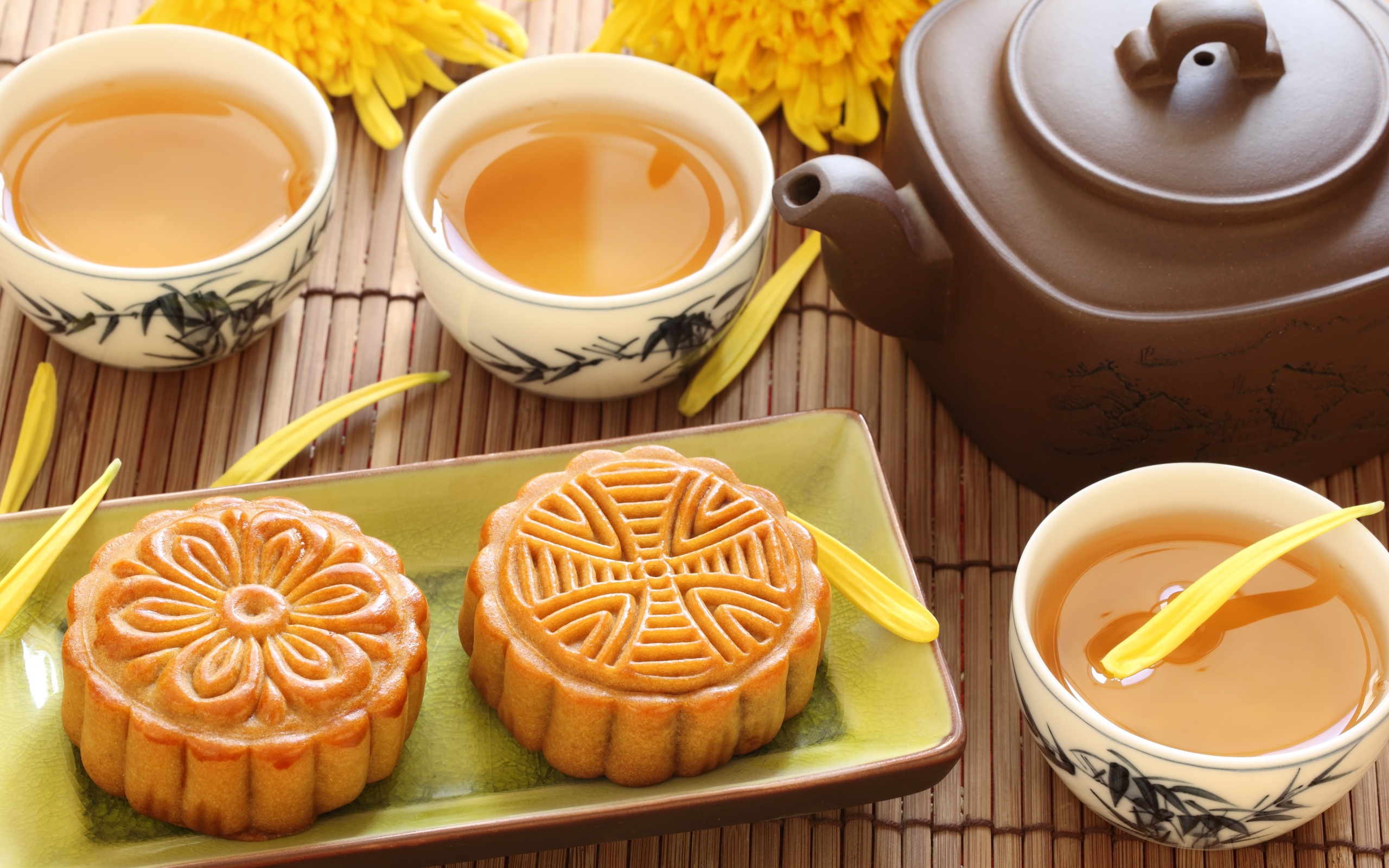
The clay rabbit is a traditional handicraft in Beijing at Mid-Autumn Festival. Based on an image of the Jade Rabbit from the story of Chang』e in the Moon Palace, a clay rabbit is personalized and made in an artistic form.
粘土兔是北京中秋节的一种传统手工艺品。以月宫里嫦娥的故事中的玉兔形象为基础,制作了一只具有个性化和艺术性的黏土兔。
Some people imitate opera characters and carve the rabbit in a stylized way, such as a warrior with a golden helmet and armor, riding lions, elephants and other beasts of prey, or some riding peacocks, cranes and other birds.
有些人模仿歌剧中的角色,用一种风格化的式雕刻兔子,比如一个戴着金色头盔和盔甲的武士,骑着狮子、大象和其他猛兽,或者骑着孔雀、鹤和其他鸟类。
The rabbit figure once was an offering to worship the moon, but later, it became a popular children』s toy.
兔子形象曾经是祭拜月亮的祭品,但后来它成为一种很受欢迎的儿童玩具。
6. Stealing vegetables
6. 偷菜

Among the Dong ethnic group in Central China』s Hunan province, it is the custom for young ladies to steal vegetables on Mid-Autumn Festival night.
在中国中部湖南省的侗族中,年轻女子在中秋节晚上偷菜是一种习俗。
There is a legend that during the Mid-Autumn Festival, the fairy in the Moon Palace will go down to the human world to spread sweet dew on the vegetables. Who ever eats vegetables with sweet dew on this night will be healthy and happy.
有一个传说,在中秋节期间,月宫里的仙女会到人间去,在蔬菜上撒上甘露。谁在这一夜吃带甘露的蔬菜,谁就健康快乐。
Also, women and girls express their adoration to their favorite young men by this way.
同时,女人和女孩也用这种方式表达对他们最喜欢的年轻男人的爱慕之情。
7. Eating river snails
7. 吃河螺
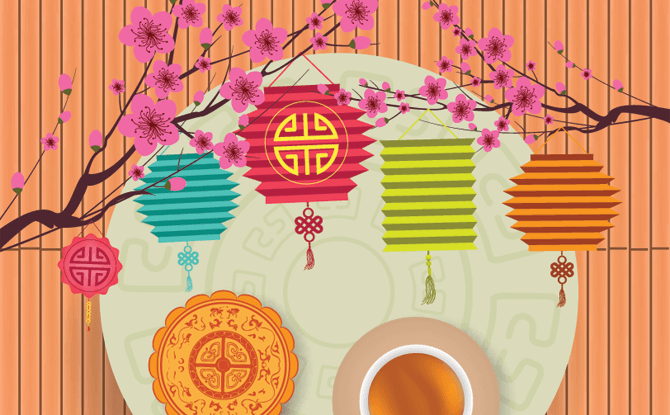
People believe that eating river snails in the Mid-Autumn Festival can make the eyes clear. River snails are rich in vitamin A, which is an important substance in visual pigments.
人们相信在中秋节吃河螺可以让眼睛看得清楚。河螺富含维生素A,维生素A是视觉色素的重要成分。
Around the festival, there are no small river snails in the abdomens of larger river snails. Therefore, their meat is especially fat and delicious. It is the best time to eat river snails.
节日前后,大河螺的肚子里没有小的河螺。因此,他们的肉特别肥美。这是吃河螺的最佳时间。
Nowadays, many families in Guangzhou eat fried river snails during the festival.
如今,广州的许多家庭在节日期间吃油炸河螺。
8. Drinking Osmanthus-flavored wine
8. 喝桂花味的葡萄酒
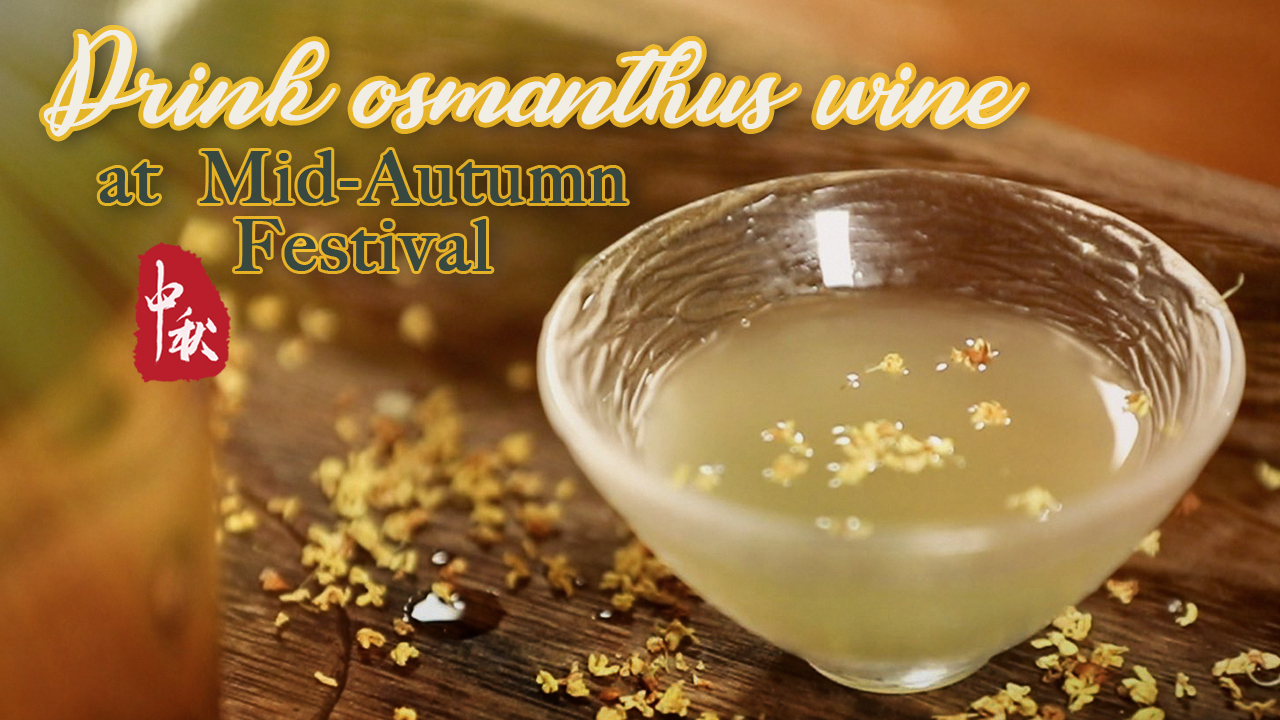
Osmanthus flowers open and spread a sweet scent in autumn. Osmanthus-flavored wine is a gift during this season.
桂花在秋天开放,散发着清香。桂花味的葡萄酒是这个季节的礼物。
Osmanthus fragrance is a symbol of prosperity and auspiciousness. Drinking Osmanthus fragrance wine at Mid-Autumn Festival implies sweetness, wealth and auspiciousness, and prosperity of the family.
桂花香是富贵吉祥的象征。中秋节喝桂花香酒,寓意甜蜜、富贵、吉祥、家庭兴旺。
People gather together to appreciate the moon in which Wu Gang, who chases Chang』e, is cutting a sweet-scented Osmanthus tree outside the Moon Palace,
according to a legend. They drink the sweet Osmanthus-flavored wine to echo the festival atmosphere.
据传说,人们聚在一起赏月,追逐嫦娥的吴刚正在月宫外砍桂树。他们喝着桂花味的甜酒来衬托节日气氛。
Nowadays, some traditional customs are disappearing in China, and the younger generation have their own ways to spend the Mid-Autumn Festival, such as shopping, going to a party, or traveling, seemingly forgetting the traditional customs of the festival.
如今,一些传统习俗正在中国消失,年轻一代有自己的方式度过中秋节,如购物,参加聚会,或旅游,似乎忘记了传统的节日习俗。
This is because many in the post-80s and 90s generations are working and studying in other cities and some of them have many pressures in life.
这是因为很多80后和90后在其他城市工作和学习,其中许多人生活压力比较大。
However, if they had chance, they would come back home to have a reunion dinner with their families.
不过,如果有机会的话,他们还是会回家与家人共进团圆饭。

 酒店英语实战指南|免费学习资源 - 酒店英语
酒店英语实战指南|免费学习资源 - 酒店英语
